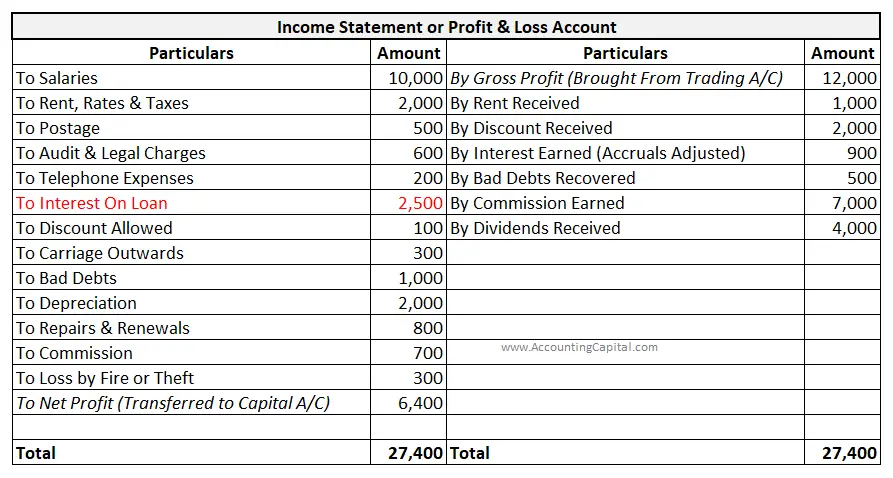With its 24/7 global activity, forex trading offers traders both challenges and various opportunities. One key challenge that traders face is effectively navigating forex holiday. Forex holiday takes place in big market economies such as the United States, Japan, and many European nations. This occurs mostly close to any national holiday.
Interestingly, this time is highly risky and challenging for traders. This is due to the market shifts in Forex dynamics that lead to different changes. Some of these changes can be in terms of volatility, trading volume, or liquidity. Hence, as a trader, you must understand these changes to make well-informed decisions during this time.
Moreover, you will avoid great risks that can save you a good amount of money. Hence, whether you are new to the trading game or an experienced player, you must prepare for these changes to gain trading success. Here, we will explore the nitty-gritty of Forex holidays and how they impact the trading market. Let’s get started.
Understanding Forex Holidays
Before we get into the depths of how forex holidays affect the trading market, we need to understand what these forex holidays are. Forex holidays are designated days on which major economies’ financial markets are closed or operate.
They operate with shortened hours as a result of public or national holidays. Moreover, the Forex market is a decentralized worldwide marketplace that is theoretically open, unlike stock markets that close completely on holidays. However, the lack of traders and financial institutions in important regions greatly reduces trading activity.
The United States, the Eurozone, Japan, and the United Kingdom are the main trading hubs where the effects of Forex holidays are most apparent. Hence, due to a decrease in trading activity, the Forex market experiences a decrease in liquidity when these markets close. Additionally, this decrease in liquidity may result in more volatile markets, larger spreads, and erratic price swings.
For instance, the typically active USD pairings may see muted trading over US holidays like Thanksgiving and Independence Day. These holidays can greatly impact overall market dynamics.
Forex holidays can have an impact on market activity in the days preceding and following the holiday, in addition to trading on the actual day. Moreover, in anticipation of these holidays, traders frequently modify their positions.
Remember, this can result in heightened market activity prior to the holidays and sometimes unpredictable price swings after the market reopens. Hence, you must recognize these trends, which will help you in getting ready and modifying your tactics to prevent being taken aback by unexpected changes in the market.
How Forex Holidays Impact the Market
Holidays related to forex have a significant effect on market circumstances, affecting volatility, liquidity, and the atmosphere around trade. You should know that the loss of liquidity is one of the biggest consequences of Forex holidays.
Moreover, the ease with which assets can be purchased or sold on the market without depressing their price is referred to as liquidity. There are thinner market conditions during holidays. This is mostly due to the absence of significant market participants such as banks, hedge funds, and institutional investors.
Interestingly, because of this, even minor transactions have the potential to result in larger-than-normal price swings. Thus, this increases market volatility and decreases predictability.
Trading during these periods becomes more difficult due to slippage. This occurs when a trade is executed at a price different than anticipated when there are fewer market participants. Another important factor that is impacted by Forex holidays is volatility, which can fluctuate according to the situation.
When you close positions prior to holidays or when the market reopens following a holiday, the market may occasionally become more volatile. You will also see sharp price fluctuations that may arise. This can act as a boon and a big challenge.
However, because fewer traders are trading on the actual holiday, the market becomes extremely quiet and has little fluctuations in prices. Furthermore, these holidays can impact the timing and release of significant economic data.
Let’s look at this example: Suppose an important report is planned to be released during Thanksgiving in the US. Here, the important data can get significantly delayed which can cause potential volatile reactions once the trading market reopens.
Preparing for Forex Holidays
As a forex trader, you must get ready for these holidays in order to reduce excessive risk and possibly take advantage of special market possibilities. Your first step towards effective preparation should be to know the Forex holiday calendar.
Then, you should note the dates that major markets will be closed or operating with shortened hours, including those in the U.S., Europe, Japan, and the U.K. Remember, this knowledge will allow you to adjust your trading strategy in response to variations in market liquidity.
Moreover, you should review your open positions after that. Hence, to minimize your exposure to erratic market fluctuations, you should think about cutting back on or terminating these positions before the holiday season. This is very important if you are trading currencies from nations where the market is closed.
You should also make important changes to your trading strategy in the preparation phase. You might see that the market may behave unusually during Forex holidays, with less liquidity and perhaps volatile price fluctuations.
Hence, to reduce risk, think about trading more liquid currency pairings or lowering your leverage. Remember, longer-term transactions can also be more advantageous for you than short-term positions. This might be more volatile around the holidays.
Moreover, you should stay updated with any news releases or economic developments that might affect the market. You should know important economic data releases can occasionally be delayed by forex holidays. This causes abrupt market swings when the data is eventually made public. Hence, you will be prepared for post-holiday trading if you are aware of these possible occurrences.
Best Strategies for Trading During Forex Holidays
Now that you understand forex holidays and how they impact the trading market in big economies, let’s find out the best strategies for trading during this period of fluctuation.
- Focus on Major Currency Pairs
It’s best to focus on trading large currency pairs like EUR/USD or GBP/USD during Forex holidays. Remember, even during the holidays, these pairings usually have greater liquidity, which lowers the possibility of unpredictable price swings.
Moreover, extreme volatility is less likely to affect significant pairs than exotic pairings. This can become highly unpredictable when trade volumes decline. You should preserve a more steady trading environment and avoid larger spreads.
Furthermore, you should also prevent slippage that frequently accompanies low-liquidity conditions by concentrating on these pairs. Remember, global economic conditions also affect significant pairs, so that you can rely more on fundamental analysis.
- Adjust Your Position Sizes
We would advise you to decrease your position sizes during the Forex holidays due to the decreased liquidity and possible rise in volatility because unanticipated market movements are more likely to occur when fewer traders are active.
Hence, smaller positions can help reduce your exposure to them. This approach guarantees that should the market turn against you, you won’t suffer large losses in addition to aiding with risk management.
Moreover, if market conditions unexpectedly shift, smaller position sizes can also make it simpler to exit deals immediately. Hence, it makes sense to modify your position sizes in accordance with the holiday schedule to protect your trading money.
- Use Wider Stop-Loss Orders
When market volatility is unpredictable, especially during Forex holidays, wider stop-loss orders can be advantageous. As there are fewer traders, price swings can be more pronounced, leading to earlier activation of tighter stop-losses. Hence, you can give your trades more breathing room and enable them to withstand short-term volatility.
Moreover, you can do this without being prematurely closed out by establishing broader stop-loss settings. This strategy protects against significant negative moves while also assisting in preventing losses from small market variations. Hence, to ensure your total exposure stays within allowable bounds, it’s crucial to counterbalance this tactic with a careful risk analysis.
- Monitor Global News Closely
Forex trading can be impacted by world events even while a particular market is closed. You should keep an eye on global news, particularly from large economies. This is essential when it comes to Forex holidays.
Moreover, even in a low-liquidity environment, economic reports, geopolitical upheavals, or comments from central banks can cause large price changes. Hence, you should stay updated with such news.
Remember, this will help you to respond quickly, making necessary adjustments to existing positions or initiating new trade in response to the information. Furthermore, you can gain an advantage in the market by taking advantage of possibilities that others might pass over because of the holiday by keeping an eye on world news.
- Consider Long-Term Trades
Holidays in the forex market are a great opportunity to concentrate on long-term investments as opposed to speculative, short-term holdings. Short-term volatility, which can be unpredictable around the holidays, has less of an impact on long-term trades.
By adopting a longer-term perspective, you may filter out market noise and base judgments on more general patterns and basic analysis. Moreover, with this approach, you can weather brief market turbulence and possibly profit from big changes that line up with your long-term research. You should also know that long-term trades also lessen the requirement for continuous observation. This is especially helpful when the market is quiet.
- Avoid Overtrading
During Forex holidays, overtrading may result in higher transaction fees and needless risk exposure. You might have a strong incentive to trade more frequently in an attempt to profit from slight price swings when the market is not working at full capacity.
However, you should know that larger spreads and slippage can quickly eat away at your earnings if you use this method. Hence, you should maintain discipline and adhere to your trading plan.
Moreover, you should concentrate on high-quality setups rather than attempting to push trade in an environment with limited liquidity. This way, you can retain a more strategic and careful approach to Forex trading. Remember, this is necessary for long-term success, and you must refrain from overtrading.
Post-Holiday Market Analysis
Following a Forex vacation, traders and institutions typically return to the market, which causes a period of adjustment that increases activity and volatility. During this time, you must understand how the market dynamics have changed. Moreover, you should spot fresh trade chances and conduct a post-holiday market analysis.
Additionally, you should critically analyze the effects of any economic statistics or news releases that happened during the vacation as a part of post-holiday research. Remember, these occurrences can result in delayed market reactions when trading begins.
This is because many traders might not have been engaged over the holiday. This may cause abrupt price changes, which present chances for astute traders. Hence, you should also assess any technical trends or patterns that emerged over the holiday season.
Although there may have been less market activity, price movement was still present. Hence, you should watch for any emerging trends like breakouts, reversals, or continuations. Hence, you should be aware of these tendencies to predict where the market may go in the near future.
Conclusion
With careful planning, understanding of the market dynamics, and modifications to your trading strategies, you can easily excel in your trading strategies during the forex holiday. Moreover, you can reduce risks and even take advantage of special trading chances by planning ahead, modifying the sizes of your positions, and concentrating on important currency pairs.
Remember, doing a thorough post-holiday market study is equally vital to grasp how the market has changed and to set yourself up for success when regular trading activity resumes.
Hence, you should keep an eye out for typical mistakes like overtrading, disregarding the economic calendar, and neglecting to modify methods that can help safeguard your investments during times of low liquidity.
Finally, you can improve your overall trading success by transforming possible obstacles into opportunities with the correct mindset and preparation.

























 Cash Flow Statement: It is recorded as a financing activity indicating an increase in the partner’s investment.
Cash Flow Statement: It is recorded as a financing activity indicating an increase in the partner’s investment.

